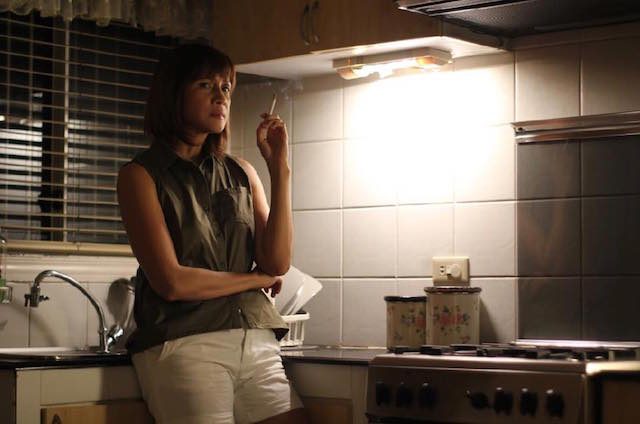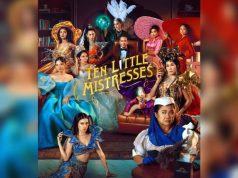
I am at a disadvantage to talk about “Changing Partners” because I’ve seen the stage play it is based on and I came into the movie wondering how they would pull off the play’s unconventional narrative structure.
“Changing Partners” is the story of one couple with a fifteen-year age gap told in four variations played by two characters. It’s the same couple throughout the film but at times they are a heterosexual couple and other times a gay couple with the genders switching.
Alex, the older person in the relationship, is played by Agot Isidro and Jojit Lorenzo, while the younger person, Chris, is played by Sandino Martin and Anna Luna. The story progresses continuously as the film starts with the couple in a good place and then as the narrative unfolds, the wear-and-tear of their age gap has begun to show as Chris starts to spend more time with Angel, who is always mentioned but never seen.
Dan Villegas and screenwriters Vince De Jesus and Lilit Reyes (from the original play written by De Jesus) are tasked to make this convention work on film, to sell the idea that this one story is being told in four variations and not confuse us.
Luckily, the film is also a musical, and the moment they start singing, it helps create the space to accept the shift in genders.
There is so much artistic and technical mastery at work in this film. As this single narrative is told in four iterations, each actor has to shift their persona from straight to gay or lesbian and portray all the nuances that come with that sort of relationship.
Even the design of each home shifts as well, each one looking lived-in for that couple. The editing is superb, switching at the most opportune moment as to maintain the drama and building intensity without confusing us as to which couple we are now following.
De Jesus’ musical score and songs become the underlying thread that hold each version of this story together as the couple loses their ability to communicate with each other over time and it’s only during the songs that they can speak their truth.
The acting in this film is incredibly precise, and Isidro, Lorenzo, Martin, and Luna are incredible at showing us the nuances between each version of Alex and Chris.
A lot of people would say that this is not a new story; that we have seen films about a couple breaking up before and that would be true. What makes”Changing Partners” special is by telling this same story in one straight narrative but with playing with the genders of the couple, it makes a statement about the nature of love and breaking up.
It says that there is no difference between how we experience it whether we are straight or gay or lesbian. The feelings are just as painful. The paranoia, the hurt, the bitterness, the regret are shared by anyone regardless of gender and preference.
It’s a wonderful film that’s masterfully done but I feel that the convention of the variations brings more attention to itself than it does to the story. I felt more involved with the editing and the acting and the production design and watching the magic of telling this story than I was with the emotions that were being portrayed in the film.
I hate to have to compare it with the play, but as fascinating as the switching of genders were on stage, I was still invested in the story. In the film version, I am more interested in the filmmaking because it’s very good.
I do have an issue with the use of a handheld camera, which I feel only worked during the ending, but everything else was so good. But I was watching the filmmaking more than I was the story.
Regardless, I applauded at the end of the film because it was executed excellently and it was a daring move by Villegas and company, and they pulled it off. The people around me applauded too and they were moved. So maybe it was just me. Maybe having seen the play had affected my experience of it. It’s still an amazing experience anyway.









